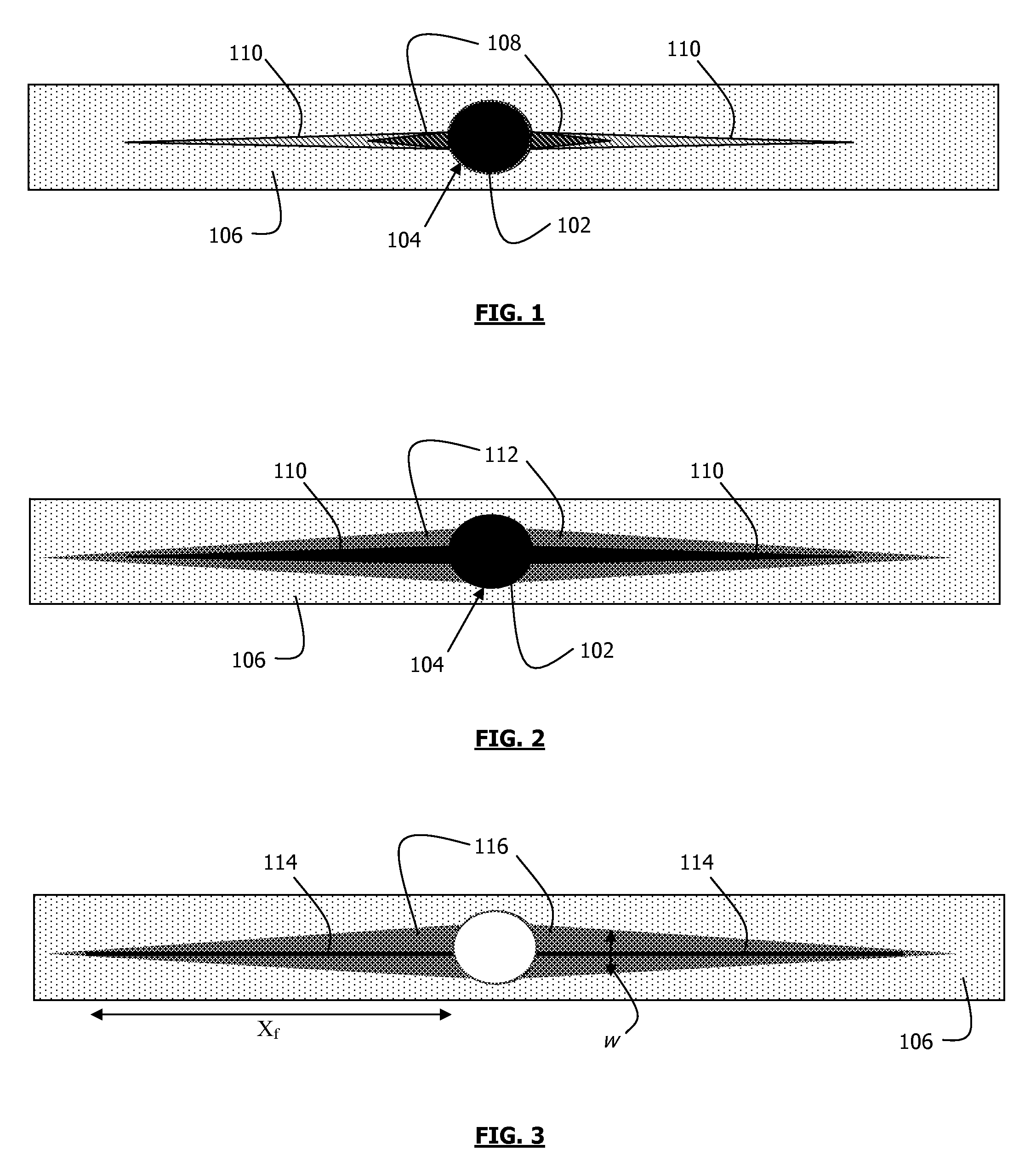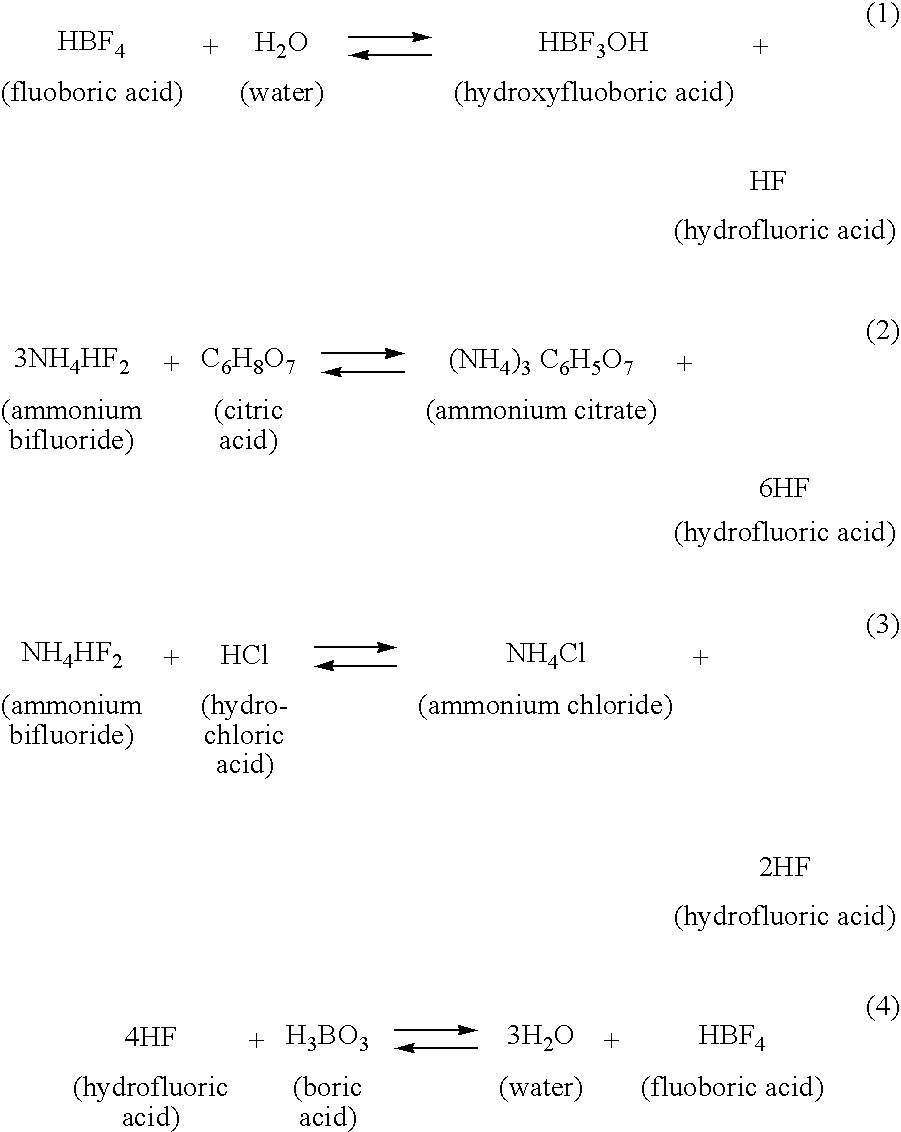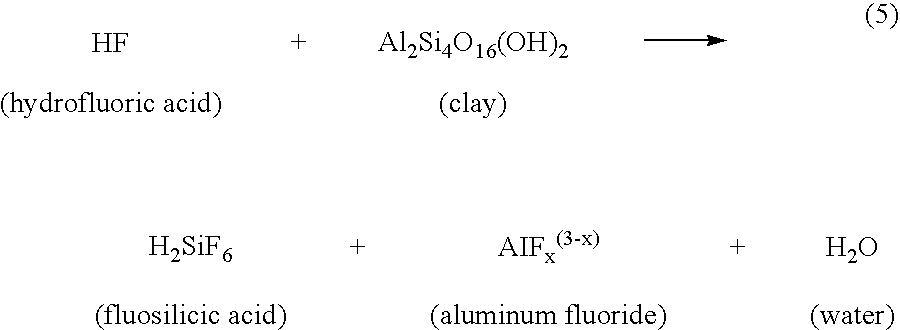Method for treating a subterranean formation
a subterranean formation and acid fracturing technology, applied in fluid removal, wellbore/well accessories, chemistry apparatus and processes, etc., can solve the problems of reducing the effective permeability (flow capacity) of the formation, failure to produce, and often limited production, so as to achieve a higher percentage of acidity and permeability.
- Summary
- Abstract
- Description
- Claims
- Application Information
AI Technical Summary
Benefits of technology
Problems solved by technology
Method used
Image
Examples
example 1
[0079]The following steps were conducted to determine the change in permeability due to the injection of viscous dissolving fluid, thus illustrating carrying out one embodiment of the invention. In a first step, core flow testing was conducted as follows:[0080]a. Vacuum saturate a core in test brine (5% KCl or NH4Cl).[0081]b. Load the core into the core flow apparatus and apply the overburden pressure of about 2,000 psi.[0082]c. Heat the cell to operating temperature and apply backpressure of about 500 psi.[0083]d. Measure initial, stable permeability with 5% KCl or NH4Cl at 5 ml / min in production direction.[0084]e. Measure final permeability with 5% KCl or NH4Cl in production direction[0085]f. Measure initial, stable permeability with 5% KCl or NH4Cl at 5 ml / min in injection direction[0086]g. Measure final permeability with 5% KCl or NH4Cl in injection direction[0087]h. Inject the viscosified dissolving agent at 1 ml / min in injection direction up to 18 pore volumes of fluid.[0088]i...
example 2
[0099]In another example of carrying out the invention, the same steps above are followed. But, the fluid composition contains an 7.5% by weight of mixture inorganic acids (6:1.5 HCl:HF), 6% by weight of MIRATAINE BET-E-40 available from Rhodia, and 0.3% by weight of a corrosion inhibitor. The balance of the composition was water. As shown in Table 2, using a Fann 35 viscometer, equipped with rotor R1, bob B1, and spring F1, fluid viscosity properties were measured at room temperature (about 72° F.) and about 158° F.
[0100]
TABLE 2Temperature (° F.)Shear Rate (s−1)Viscosity (mPa-s)72°5118772°34110472°17099158° 51144158° 34159158° 170111
PUM
 Login to View More
Login to View More Abstract
Description
Claims
Application Information
 Login to View More
Login to View More - R&D
- Intellectual Property
- Life Sciences
- Materials
- Tech Scout
- Unparalleled Data Quality
- Higher Quality Content
- 60% Fewer Hallucinations
Browse by: Latest US Patents, China's latest patents, Technical Efficacy Thesaurus, Application Domain, Technology Topic, Popular Technical Reports.
© 2025 PatSnap. All rights reserved.Legal|Privacy policy|Modern Slavery Act Transparency Statement|Sitemap|About US| Contact US: help@patsnap.com



